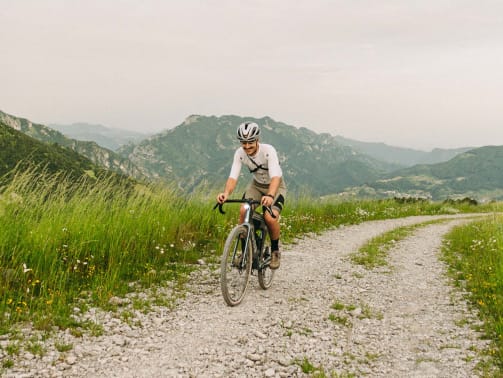Long distance cycling guide: Tips for riding and choosing the right bike
Riding longer distances can be a fantastic, life-affirming and richly rewarding experience. We asked two Canyon long distance legends -Emily Chappell and Vedangi Kulkarni - for their wisdom on the what, why and how of bigger bike rides.
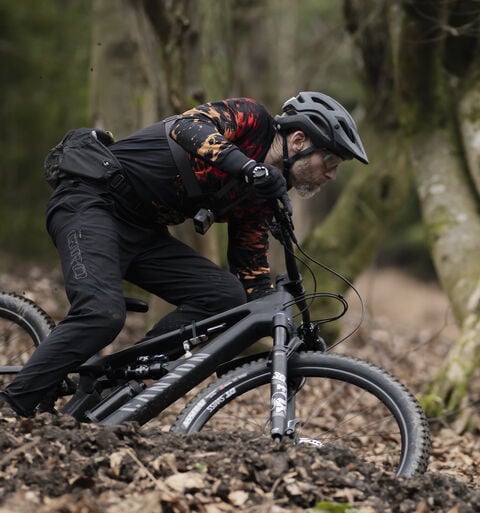
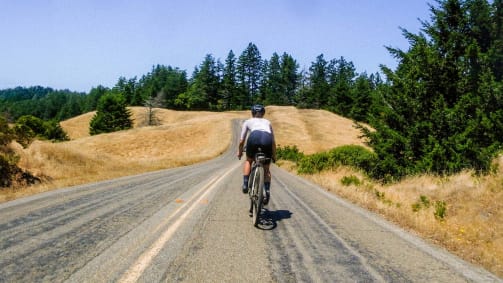
Planning a long-distance cycling adventure? Heading for the horizon is a lot easier - and more fun - with the right preparation and knowledge. This guide covers everything you need to know, from training and pacing strategies to choosing the right endurance bike for your ride.
Contents
What is long distance cycling?
You can throw all sorts of numbers at long distance rides. Emily Chappell has won the 4000km Transcontinental Bike Race and other epic events. Vedangi Kulkarni has just completed her ride around the entire world.
We all start our cycling careers by simply wobbling a couple of metres, and then a few more the next time around. Ultimately though, that’s all a longer distance ride is: A bike ride that’s longer than the one you did before it and which hopefully gets you as excited and astonished at what you can do as that first push-to-pedal moment.
As Vedangi puts it, “Any big distance is essentially a lot of chunks of smaller distances. If this is your first 100 km ride but you have done a 20 km ride before, then this is just that ride, 5 times. Even those 20 km are 2 x 10 km rides. So if your usual cafe ride is a 10 km loop, then just think of it as doing that a few times over.”
But whether you’re going from couch to 10 km, aiming to complete your first century or planning a triple-figure trip, the prep and advice is basically the same.

Choosing the right bike for long distance cycling
Just like the best clothing, the best bike for long distance riding is also the most comfortable. Sure an aero bike might be faster at first and a lightweight bike is great for hills, but if you’re uncomfortable on your bike when riding longer distances, then your motivation is going to be low and your chance of quitting high.
Whatever bike you ride, be sure it fits you properly too. Correct saddle height is crucial to avoiding back and hip pain. Shoe and pedal position are vital to keep your knees happy. Handlebar angle, width and reach are all big factors in how your upper body will feel as you clock up the kms too. As always, trying different options and finding what works for you is key. If finding that perfect fit on your bike remains a mystery to you, then reach out to a local bike fit expert or try a bike fit app to get an assessment.
If you’re thinking of buying a new bike, we recommend something from our range of Canyon endurance machines for on and off-road adventures. The Canyon Endurace is light, fast and responsive, but has a more relaxed and less aggressive geometry than our race bikes. The more relaxed geometry makes it easier on your hands, back and shoulders and less stressful to ride when you’re tired. The Endurace also has plenty of mounts and bespoke bag options for carrying everything you need on longer rides.
If you might be mixing road with some easier gravel, then the Canyon Grail is fast and comfortable with smart internal and external cargo options for carrying everything you need.
For long distance off-road exploits, the Grizl Escape, with our innovative Full Mounty “go-far handlebar”, is a clear winner. It’s set up for carrying all your gear comfortably and is available with our ECLIPS endless power system for off-grid adventures.
If you’re racing far into the mountains on rugged terrain, then our Exceed MTB is light, fast and super capable. And if you’re exploring off piste at an easier pace, our Grand Canyon MTB is a perfect partner for wild riding and is available in sizes to fit the whole family.
Long distance cycling tips: Expert advice and strategies
Riding long distances on your bike requires more than just stamina – it’s about smart training, pacing, nutrition, and knowing how to handle your bike efficiently.
How to ride further and stay strong
Whether it’s on a training ride or the actual event, one of the easiest mistakes is to get over excited at the start. This makes completing your plan much harder and sometimes impossible. We’ve all learned the hard way, but you can avoid making this mistake by taking small steps rather than expecting to make giant leaps.
Don’t increase distance/intensity of rides by more than 20% each week. Don’t increase the frequency of rides by more than 20% each week. And don’t expect to increase both the distance AND frequency of rides at the same time, or else you’re going to be very sore, very sad or both.
In terms of how to ‘train’ think of your end goal. If your big ride is going to have some off- road sections, be sure to include some in your prep. If it’s got steep hills, then head for your local lumps when you can. If you’ll be riding in a group, then get used to riding with friends or a local cycling club so you don’t feel freaked out on the day.
Don’t feel like there’s no point in riding if you can’t go a long way every time. Just riding into work regularly or spending lunch hours in the saddle a couple of times a week can make a massive difference to your endurance level. Walking the dog, swimming or any other exercis will also help too. Just keep the intensity similar to a steady ride on the bike and it all adds up to the goal of going further.
Start listening to your body straight away too. Getting used to riding long distances is a long process with a lot of learning. So while it will be a struggle sometimes, it shouldn't be a struggle most of the time. Excessive tiredness, tweaks, and twinges are all potential red flags telling you to take it easy. Finally, if you’re at all unsure about your basic health, check in with your doctor before starting your plan.

Eat smart: Nutrition advice to improve your endurance cycling
You wouldn’t expect a car to get you somewhere without enough fuel in it, so don’t expect your body too either. Sure, it’s amazing how far you can push yourself when digging into your reserves, but it’s a really bad idea to regularly ride when you’re on empty. Not just in terms of performance and mood on the day, but also the days and even weeks afterwards. And, yes, we’re looking at you, “fasted riding strategies” because those toxic days are thankfully largely behind us in terms of training methodology.
With so much hype - and hard selling - still surrounding what to eat, knowing what to pick off the shelves and put in your pockets can be confusing. What’s important though is what happens when you put it in your mouth. Because despite what you might read, no two people are the same. You have to figure out what works for you. And if successful re-fueling for you takes the form of gobbling Haribo and homemade sandwiches rather than expensive gels and carb drinks, then that’s great.
While there’s some very sound science around protein, carbohydrate and fat ratios for elite athletes, we’re talking about going the distance at your own pace here. And never forget riding is meant to be about having fun too. Forcing some sticky science down your throat is a lot less fun than stopping for an ice cream if you fancy one. Eating while cycling for hours at a time can put your body under a lot of stress, so it’s important to try different foods at different times of the ride.
Like everything else with endurance riding, the best way to work all this nutrition stuff out is to just try different options as you prepare for your big adventure. So, fill up your pockets and bottle cages with more food and drink than you need on training rides and have yourself a buffet as you pedal along. See what makes you feel better or worse and if there’s something that you’d never bother eating, no matter how hungry you get, don’t bother taking that again!
Vedangi certainly went through a lot of experimenting to find out what works for her; “Take more snacks than you think you’ll need and carry loads of electrolytes. I did some tests earlier this year and found out that I sweat a lot more than an average person. This has explained why my heart rate runs on the higher side during certain activities, my muscles cramp up more often than they should and why my energy levels deplete too soon. I found that staying on top of my electrolyte intake and upping the snack consumption has helped me massively with maintaining my energy levels and making sure that I hit my personal goals well.”
Again, as with all the other aspects of prep, don’t view eating during the ride in isolation. What you eat before the ride, after the ride and even the days between rides makes a big difference. As always, there’s a ton of science out there on the subject, but most of it is either designed for elite athletes, to sell you something, or perhaps both. So go with your gut when it comes to how you eat your way to endurance. Literally.
Take more snacks than you think you’ll need and carry loads of electrolytes

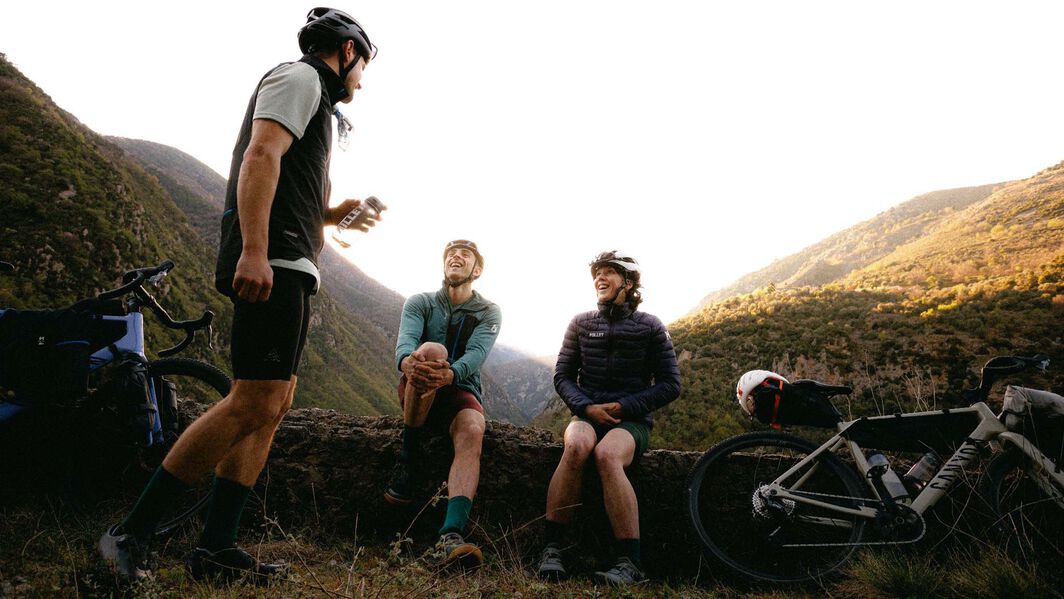
Find like-minded friends
Riding long distances means you’re out and about for hours or days at a time. Finding actual riding partners or reaching out to members of the riding community who have the same goals as you will work wonders when it comes to helping you reach your long-distance targets.
“It makes a huge difference knowing that you have a cohort of people who get it,” concludes Emily. She points out that these people can exist in real life or just within your mind: “I have what I call my ‘invisible peloton’ and when a ride gets really hard, I sometimes imagine they’re riding around me or ahead of me to help me fight headwinds”. Real friends can come along for the ride via your phone or by taking handwritten messages with you too. As Emily says “This is one of the reasons why social media can be such a lifeline on long rides - it helps you feel less alone.”
Plan your cycling route: Strategies for long distance rides
When riding long distances, you’re likely to ride into territory you won’t have covered before, but this is no bad thing.
“Plan a route that you are genuinely curious about and want to explore. That way you’re focused more on what you get to see rather than the numbers.” explains Vedangi, referring to the constant buzz of discovering new people and places.
Emily echoes many of his sentiments but highlights that the different types of events will dictate your route. “If it’s a race, you’ll want the shortest, flattest route between A and B. If you’re out for an adventure, I’d recommend giving yourself as much time as possible to allow for detours and quieter roads,” she suggests. “My favourite discoveries have always been the ones I wasn’t expecting!”
Apps like Strava, Ride With GPS and Komoot can all be useful for planning your big ride, but spending time with a map yourself will give you a better appreciation for the bigger landscape. It will also be invaluable if you want to extend or shorten the ride while you’re on it.
Always take a marked map - or at least a picture of one - with you too and learn the skills to use it. Otherwise, if you lose your phone or GPS (or they run out of battery) then things can get very scary and dangerous very quickly.
My favourite discoveries have always been the ones I wasn’t expecting!


What to wear on a long-distance ride
Comfort should be the absolute priority when riding your bike a long way. Because if you’re not comfortable on your bike, then things will turn miserable pretty quickly.
Contact points, cycling clothes, such as shorts, gloves and shoes - are the most important things to get right but try and create a ‘capsule’ of complementary kit that works for a lot of different weather. That’s particularly important for multiday, or multi area adventures where conditions can change a lot, but you’re limited to what you can carry.
Again, use the training and prep time for your kit to work through your wardrobe and find favourites. Emily definitely thinks there’s no substitute to real riding compared to online reviews or indoor training. “Research and advice will only get you so far because everyone’s anatomy and riding style are different. You need to put your kit through all the horrible conditions you might experience during your challenge too.”
While it’s tempting to buy fresh gear for your big adventure, Emily stresses that proven comfort is crucial. “As a general rule, I set myself the deadline of making no new kit decisions within a month of the event,” she insists.
Important pieces of kit to test for long-distance cycling include cycling shoes, bib shorts, gloves and upper body layers such as jerseys, base layers, gilets and jackets. Find out which kit combinations are comfortable for you and will help you survive rain, sun and everything in between.
What to take on a long-distance bike ride
Don’t undermine all your big ride preparation by risking a bike breakdown you can’t fix. Take a pump, tubeless plugs (if appropriate) a few inner tubes and tyre levers. You’ll need a multitool with a chain breaker and spare links for any roadside repairs too (Explore our range of bike maintenance products for everything you need for quick repairs on the go). Make sure you know how to use these tools too. Practice beforehand and/or sign up for a course at your local bike shop. A couple hours of more riding won’t make a big difference in your success on the big day, but a bike issue you can’t fix can ruin your ride completely.
If you’re out for a whole day or longer, a battery pack and the relevant cables are useful for charging lights, a GPS computer and your phone. The last thing you want is to be lost in the dark with a dead phone! You can easily stash these essentials in a frame bag for easy access, but it’s good to keep your electric items in a waterproof dry bag just in case the weather turns unexpectedly.
Finally, a credit card can be useful for getting yourself out of unfortunate situations. Keep it separate from your other money in case you lose your wallet or it gets stolen.
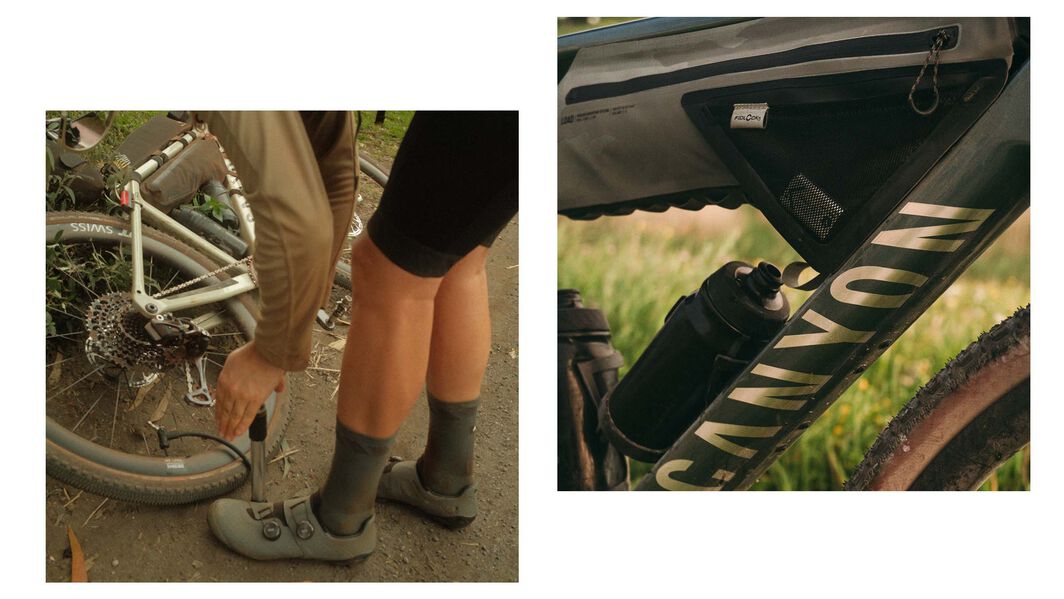
What to expect next: Your long distance cycling journey ahead
Hopefully what you’ve read here has given you some insight and information to make prepping for your long ride much easier. What that ride is (and where it takes you) is entirely up to you, but we hope you have a brilliant time on your adventure. And like we said right at the start, long rides are all about the experience not the numbers. Some of our favourite rides and most valuable learnings have been a “fail” in terms of our original intentions, but being brave enough to try is always a massive victory.
Something Vedangi said sums it up superbly, “You don’t need to know whether you’re capable of taking on the distance that you’ve planned before you’ve left your house. You just need to trust yourself enough to leave the house regardless of the outcome. If you’re well prepared and generally sensible about things when you head out, you already have everything that you need to cope with the moments of discomfort. Just trust that you will be okay. When you know that there is a finish line to your challenge, your mind and body will carry you to it. If you can’t, there will be ways out and that’s okay too. What matters is that you headed out the door and gave it your best shot.”
Whatever the result, we’re stoked to have been a part of it, and we’d love to follow along too, so make sure you tag @Canyon in your training and ride photos on Instagram!
Discover our Mountain Bikes
Did this article help?
Thank you for your feedback
-
 About the author
About the authorGuy Kesteven
Meet Guy Kesteven, our author, a northern UK veteran who has been writing about off road bikes, tech and adventures for almost thirty years














